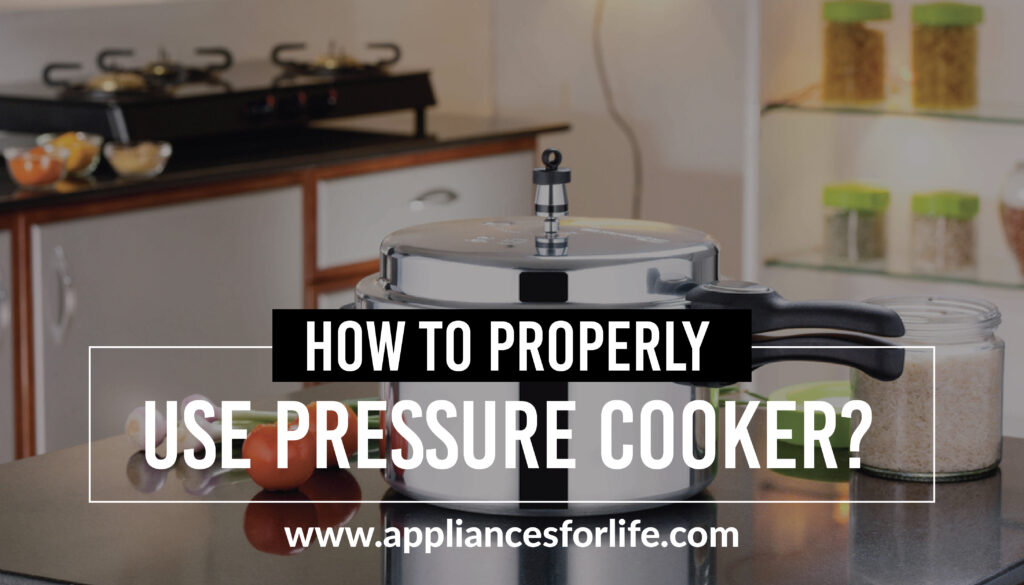- Personally, I don’t like cooking, majorly because of the stress that comes with it— Well, not all delicacies are stressful in their preparation but a great meal will certainly require some effort. And the fear of this ‘effort’ makes me eventually dash out to Mcdonald's to grab something instead- It is always an easy alternative. However, with a pressure cooker, cooking is extreme bliss for me. Not only does it shorten cooking time significantly, but it also helps trap the nutrients and flavor of my food within the pot.
- Ever since I discovered all of these interesting benefits of pressure cooking, I became a chef in my own space. Pressure cooking is riddled with several benefits but for these benefits to be optimized, it is necessary to learn how to use it effectively. This article explores some benefits derivable from the use of a pressure cooker and further gives an insight into how to go about the use of it, effectively.
In simple terms, a pressure cooker is a sealed chamber that traps the steam generated as its contents are heated. When the contents of a pressure cooker are heated, steam builds up from within and as steam builds, pressure increases, driving the boiling point of water past 212 degrees Fahrenheit. In a nutshell, the increased temperature in a pressure cooker, caused by trapped steam and lack of evaporation results in a faster cooking time and more delicious delicacy.
Table of Contents
ToggleHow a Pressure Cooker Works
A pressure cooker looks exactly like a regular pot. If the lid of a pressure cooker is not attached, you can never tell it differently from a regular pot. A pressure cooker has a modified lid that locks on over a rubber gasket to create a seal. The seal is quite effective at trapping steam within the pressure cooker. The cooker works by raising the temperature of boiling water, thereby speeding up the time it takes to boil, braise, or steam. To understand how a pressure cooker works, you need a little idea of how it is being used. To use a pressure cooker, you need to put your food in the pot, of course, and add some liquid to it. Now, it is important that you add a minimal amount of liquid or water to it in order to help the steam created in the pressure cooker to build up to a certain level which makes cooking automatically faster. Once the lid is locked in place and the cooker is set on high heat, steam develops in the pot and can’t escape. At this level, the boiling point of water is significantly increased from 212 degrees to 250 degrees, facilitating faster cooking. Once the cooker has reached full pressure, usually indicated by a gauge or pop-up rod on the lid, a release valve opens, letting out steam in a regulated flow to maintain a constant temperature inside the pot.
On the other hand, electric pressure cookers have a stainless steel outer casing, equipped with a heating source that obviously heats up the content of the pressure cooker.
Advantages of Pressure Cooking
1. Reduced Cooking Time
This is one of the biggest positives of using a pressure cooker. You get to save a lot of time cooking with this kitchenware. Pressure cooking is a relatively fast mode of cooking because the pressurized chamber of a pressure cooker keeps steam trapped in the pot. This steam then increases water temperature, helping your food cook faster.
2. Nutrients and flavors are retained
Pressure cooking is considered a very effective means of cooking because it conserves the nutrients of the food/item being cooked. This preservation is achieved when the steam produced during cooking is trapped within the pressure cooking chamber. On the flip side, a regular style of cooking permits the escape of steam from a pot even when the lid is properly shut, and as steam escapes, so do the nutrients resident in the food item being cooked.
On the other hand, pressure cooking helps preserve the flavor of your food. Taste is an indispensable element of cookery, and pressure cooking helps to lock in all of the flavors that can so easily be dissipated using conventional cookery. That makes pressure-cooked meals extra delicious.
3. Less Mess with Pressure Cooking
One pan means that you have less cleaning and washing up to do afterward than with regular cooking, where multiple pots (and utensils) are typically involved. The lock-down lid also means that there can be fewer spillages to deal with. It is really nice when you are able to throw all your ingredients into one pot, set it going, and hey presto, in a matter of minutes, your meal is ready. I use mine for dishes such as stews, beans, soups, curries, stocks, lentils, mashed potatoes, chicken, or anything involving tough cuts of meat. This practice indeed affords a lot of ease while you cook and even creates little or no mess at all.
4. Pressure Cooking saves energy
Pressure cooking uses heat in a much more efficient way than regular pots, hence it saves energy. Also, the fact that pressure takes less time to complete its cooking already saves a lot of energy. When energy is preserved, the cost of utility bills decreases, hence more money is saved and this even makes your cooking processes much more environmentally friendly.
5. Stovetop Cookers Are Durable
A quality pressure cooker is a great investment. A solidly constructed model that’s well looked after will last you many years. The only part that you might need to replace at some point down the line is the rubber sealing ring, but other than that, these pots are almost indestructible in my experience.
Disadvantages of pressure Cooking
1. Safety
Pressure cooking with a pressure cooker can be very dangerous if you aren’t familiar with its use. One has to specially learn how to use a pressure cooker to avoid injuries it could cause to the body. However, as soon as its correct usage is mastered, it could become the safest means of cooking.
2. Foods With Different Cook Times
A major downside of pressure cooking is that you have to cook every ingredient in exactly the same amount of time and this is obviously because you are required to add all the ingredients meant for your cooking, all at once. The fault in this practice is that, in the situation where some ingredients do not need to stay too long cooking, they may be forced to overcook when they are loaded in your pressure pot with the ‘wrong company’. And consequently, one may just have to use separate pots and pans in addition to the pressure cooker.
2. You can’t open it to check for Readiness or Seasoning
As much as I love my pressure cooker, I do find it frustrating that I can’t just open up the lid and check what’s happening with the meal. Cooking is an inexact art form and often the best way to know if the food’s ready is to look at it or try a sample. Achieving the correct level of herbs, spices, and seasoning is also easier if you can add as you go.
3. Takes Some time to Learn to Use Them
The whole of this article has been dedicated to informing you on the use of a pressure cooker, this would not be the case if it wasn’t such a big deal. Using a pressure cooker effectively does require some learning. It’s a very different process relative to cooking with a regular pot. One needs to learn how to properly use a pressure cooker in order to enjoy all the benefits accruing and to avoid harm.
4. Only Good For Certain Meals.
Pressure cooking is not exactly a perfect fit for all kinds of recipes. If you are cooking a meal that needs constant inspection or needs ingredient addition, pressure cooking may not be the best way to go. Hence, While they are great for certain sorts of meals, such as stews and soups, they are not suitable for many others, one example being meals that require high-temperature roasting. You can’t cook a steak in a pressure cooker.
How To Use a Pressure Cooker
I know right!, the prospect of pressure cooking was irresistible for me too, you are not alone. The benefits/advantages of pressure cooking are indeed mouth-watering. Now, no one needs to wait forever before their meal is prepared and while you are at it, you get to preserve all the nutrients resident in your ingredients. Before you read the instructions, note that you need to acquire any of the best brands of pressure cookers, to enjoy their functions.
1. Read the instructions
Nearly all devices have a user’s manual these days and they aren’t just there to make the devices look good. They are there to instruct every user on the guidelines to follow, in order to use a pressure cooker safely and efficiently. Modern pressure cookers have a number of safety features and this is for good reason. The heat generated by the steam could easily scold if not handled properly. Follow the instructions for your specific model and you won’t need to worry about this.
2. Inspect your Pressure Cooker regularly
The need to keep your pressure cooker in good order can not be emphasized enough. In order to enjoy the benefits that come with the use of a pressure cooker, one just has to take the pain to put it in excellent working order. If need be, replacements for worn-out are usually readily available in most pressure cooker kits. You may find yourself replacing your rubber gasket to get a tight seal. This is one of the faults that not so thorough inspection can reveal. These checks can also be done to ensure that the valves of the pressure cooker are free from debris.
3. Brown it
Pressure-cooked food doesn’t brown so it’s worth doing this at the start of cooking before adding liquid and putting the lid on. Meat looks and tastes more appetizing with a little browning. Onions, garlic, and spices also benefit in the flavor stakes from pre-cooking. However, if you’re rushed, and time is more important to you than these nuances, dispensing with this step is possible.
4. Apply your Liquid
The simple logic is, that pressure cookers, cook with steam. However, there is no steam without water. Hence, without water in your recipes, there will be no steam and consequently, your recipes will not be cooked. Whether it is milk, water, or even wine, liquid in pressure cooking is just about the most important component to have. Instructions will let you know the minimum amount and some even tell you how much to use for different items. If you’re using a conventional recipe you can often reduce liquid content that would otherwise have evaporated but don’t go below the recommended amount.
5. Do not overfill your pressure cooker
Nearly all pressure cookers have minimum and maximum marks on the inside. The marks clearly indicate limits that should never be exceeded. A pressure cooker should never be more than two-thirds full. And when liquid is present, it should never be more than half full. Overfilling the pressure cooker will force food out of the pressure release valve- this can be really messy. Also when water is excessive in the pot, the food being prepared may be overcooked and soggy. You also need room in the pot for the steam to build up to facilitate cooking.
Follow this guide:
- Liquid foods, including soup and casserole – no more than ½ full including liquid
- Vegetables and joints of meat – no more than 2/3rds full including liquid
- Foods that may froth or expand, including cereals, pulses, rice, and pasta – no more than 1/3 full.
6. Heat it right
There is no cooking without some heat even despite that your cooking had started since the moment you added your recipes. To use your stovetop pressure cookers, turn your hub up to full power so that the pressure cooking process can begin. But you need to be attentive to this pot while it cooks your food. It can never be over-heated, otherwise, your food will overcook, and while your food is being cooked set a timer. Recipes will tell you to start cooking from when the correct pressure has been reached. When you get to this point, turn the heat right down to the minimum temperature you can while still maintaining pressure. All pressure cookers have a simple indicator and your instructions will tell you how to read yours.
7. Time your cooking and check it regularly
Estimating the time needed for pressure cooking may be tricky, especially if you are a newbie. However, paying attention to and discovering the cooking times in standard recipes may help determine the time needed to cook some recipes. For example, meats that take time to tenderize and large pieces of meat are going to take relatively longer to cook. On the flip side, Vegetables and fish will take little or no time to cook, as a matter of fact, cooking time may be as much as halved.
Timing is crucial to prevent overcooking and even undercooking. When you discover that some recipes will require a longer cooking time, you may need to add them much earlier than those that require less time to cook. However, if you’re not sure about cooking times, undercook rather than overcook. You can always bring the food back under pressure and continue but once it’s spoilt it’s spoilt! Add more liquid if necessary.
8. Releasing the pressure
When your stopwatch beeps, you know it is time to release steam in your pressure cooker. Before you release pressure on your pressure cooker, consult your recipe or cookbook for accurate timing. As soon as your cooking is complete, release pressure from the cooker!. You can release pressure from the cooker in the following ways;
Through natural release: This method is suitable for high-liquid foods, as well as meats and other foods that aren’t at risk of overcooking. You simply leave the cooker alone and let the pressure come down naturally. This process can take anywhere from 5 to 20 or more minutes depending on your cook time and how full your cooker is.
Through Quick release: This method is suitable for foods with shorter cook times like some vegetables and seafood. For both Stovetop cookers and electric cookers, press the steam release valve once cooking is complete, however, while doing this, you need to be quick enough to get your hand or any other parts of your body away from the pressurized steam that forcefully escapes from the pot. Also, make sure that there is no obstruction of any sort in the pathway of the escaping steam.
Through Cold-Water Release: This is the fastest method for stovetop pressure cookers and a good option when you want to stop cooking quickly. However, DO NOT use this method with electric pressure cookers or you stand the risk of electrocution. For stovetop models, place the pressure cooker in the sink. Hold the cooker at a slight angle and run cold water over the outer edge of the lid so that it flows over the lid and down the sides.
When you are done, do not forget to keep your pressure cooker in great condition by keeping it clean. You can even wash it in a dishwasher because it is dishwasher safe.
FAQs
What do I need to do before using a pressure cooker?
Before using a pressure cooker, the first thing to do is, check the user manual, to understand the dos and don’ts of your pressure cooker. The manual may also provide a hint on the appropriate use of your pressure cooker.
How much pressure can a pressure cooker hold?
But in a standard American pressure cooker, the pressure reaches 1 atm or 15 psi (pounds per square inch) above standard atmospheric pressure, or 2 atm, which is typically the maximum pressure limit on most cookers. At 30 psi, the boiling point of water is about 250°F
20 MINUTES
ESTIMATED TIME DESIGNING AND UPLOADING THIS ARTICLE
9 HOURS
ESTIMATED TIME RESEARCHING AND WRITING THIS ARTICLE
You Might Also Like
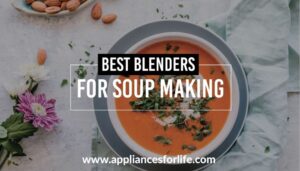
Top 3 Best Blenders for Soup Making
If you’ve been paying attention to how blenders have evolved into one of the best food processing machines in the world today, you’ll realize they were always destined to be. Everyone is quite happy with the growing popularity blenders are enjoying, but many years ago,
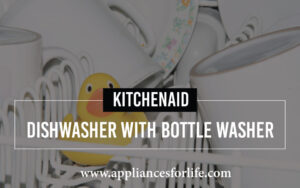
The Best KitchenAid Dishwasher With Bottle Washer
KitchenAid dishwasher with a bottle washer is a must-get if one must clean those bottles without leaving any leftovers or tiny food particles in them. However, if one can not find a Kitchenaid dishwasher with a bottle washer, third-rack KitchenAid dishwashers will still do the

The best juicers on the market are essential appliances for consumers with healthy eating lifestyles! Juicers are a great way to get your recommended servings of fruits and vegetables, especially for those who have a hard time eating their veggies! It is also a great

Why Does My Shower Sound Like a Kettle
Why Does My Shower Sound Like A Kettle A shower making a whistling noise is unusual and must be dealt with as soon as it’s observed. This article provides answers regarding why showers may sound like a kettle. The bathroom is one of the important
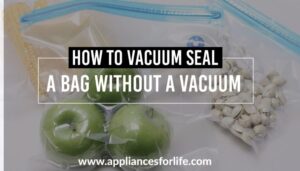
How to Vacuum Seal a Bag without a Vacuum?
Vacuum sealing is a method that has survived many years because it is an effective method. For a long time, food preservation has been a constant battle people have been fighting so hard, especially in a world where environmental factors can affect food if effective

How to Use a Stovetop Popcorn Popper?
Although we now live in a modern world, there are things from many years ago we still can’t get over. Popcorn is one of those things, and in this article, we’ll explore how to use a stovetop popcorn popper. The world has become bigger, and
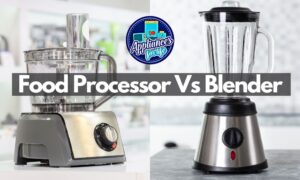
Food Processor vs Blender: Battle of the Kitchen Titans
Food processor vs blender As highlighted above, Blenders and food processors are essential kitchen appliances that serve different purposes. They also have distinct features that make them suitable for various culinary tasks. Hence, if you must use both interchangeably, you better be careful not to
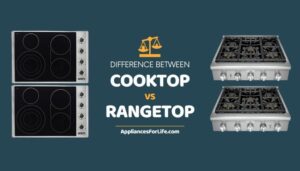
Difference Between Cooktop and Rangetop
Rangetop and cooktop are two different cooking options but a lot of people mistake one for the other due to some certain similarities. In this article, we’ll be looking at what makes a rangetop different from a cooktop, as well as their similarities which often

Air Conditioner Freezing Up And What You Can Do About It
An air conditioner freezing up can really put a dent in your budget or your emergency savings, not to mention make for a horribly uncomfortable summer. There are certain things you can do to solve the problem without having to dip too far into your
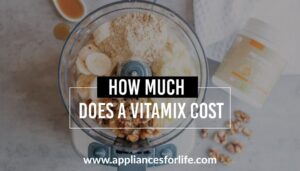
The concept of food processing has been given more importance over the years, and it’s safe to say the concept is just getting the recognition it deserves after spending so many years in the shadows. For many years now, people have known food processing to

